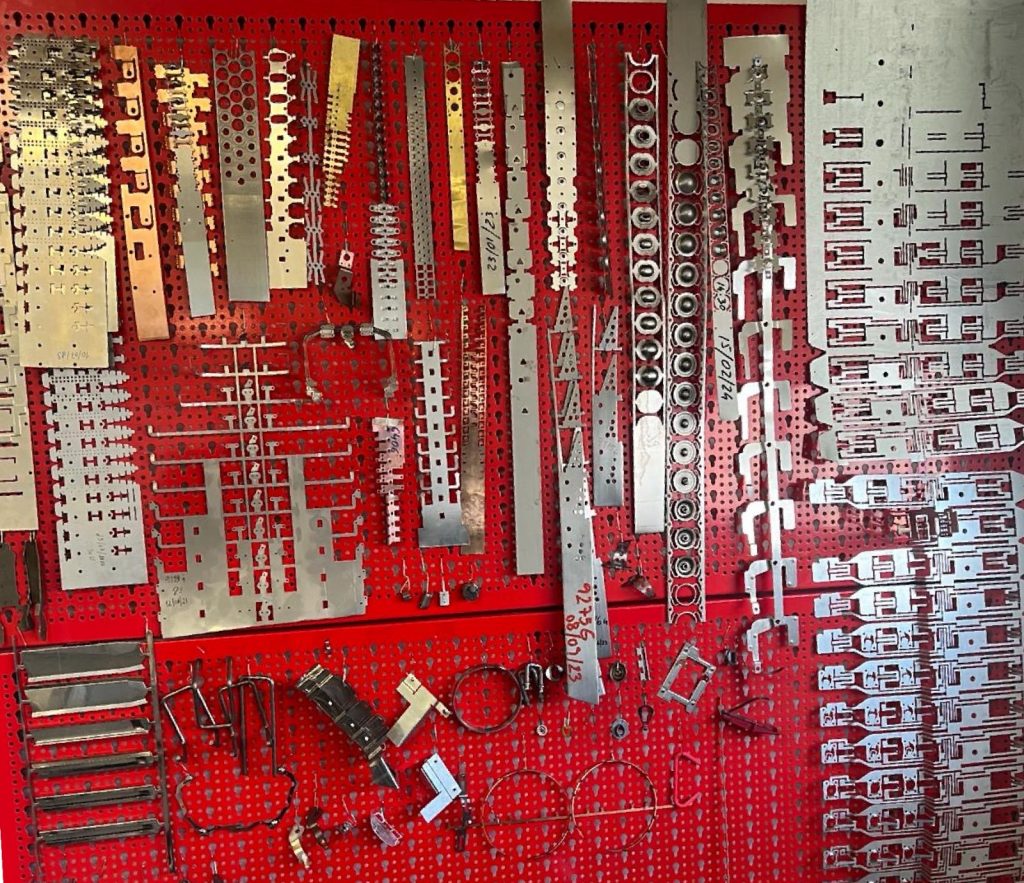
In this new article, we continue our conversation with Miguel Queirós, an engineer that works as a sales technician at ETMA, to find out more about the Stamping production process. After explaining in the 1st article what this process is about and what are its main goals, we will now discuss the different stamping techniques used at ETMA: Progressive Stamping and Transfer Stamping.
At ETMA, we have different stamping techniques, among which Progressive Stamping. Due to the dimension and type of the most requested part operations from our clients, this production technique is the most frequently used at the company. Please explain to us how this technique works.
One of the techniques used to apply the different operations necessary to the conformation of the material is doing it successively, as the material passes through the tool.
I can briefly highlight the most relevant aspects:
- The material progresses in steps, with a certain value (material advance);
- In each step, several specific operations are performed and the final part is the cumulative result of those operations. The last step is the separation cut of the finished part;
- The tool has a continuous alternative movement of open-close-open, imprinted by the machine (press);
- Each material advance happens whenever the tool opens, which is done by an auxiliary equipment (feeder);
- The movement of the feeder is synchronised with the movement of the press, i.e., when the tool opens, there is movement, but as soon as the tool closes, the movement stops;
- To allow automatic continuous operation, the material is provided as a strip from a coil;
- The material from the coil reaches the feeder through the action of an auxiliary equipment called unwinder.
ETMA also provides Transfer Stamping, in which it also has a vast experience in the manufacture of parts through deep drawing. Can you explain to us how this technique works?
Transfer stamping is frequently used for parts obtained through deep drawing. This is another stamping technique that uses metal sheets sufficiently dimensioned for the final part, which are transported through several steps of conformation, whether manually or by dedicated automatic devices.
Tell us about this deep drawing process.
Deep drawing is an operation used for conformation, starting with the metal sheet, of high parts. It is used to manufacture, for example, beverage cans or hole closure plugs.
We end this 2nd article highlighting, once again, not only ETMA’s vast experience in Progressive Stamping, but also in the manufacture of parts through deep drawing. This means the company is prepared to cooperate with its clients in the development of new projects in this area.
The following topics will be addressed in the next articles:
Design and manufacture of tools
In the meantime, if you are interested in learning more and, eventually, talking to us about a project, please do not hesitate to contact us.




